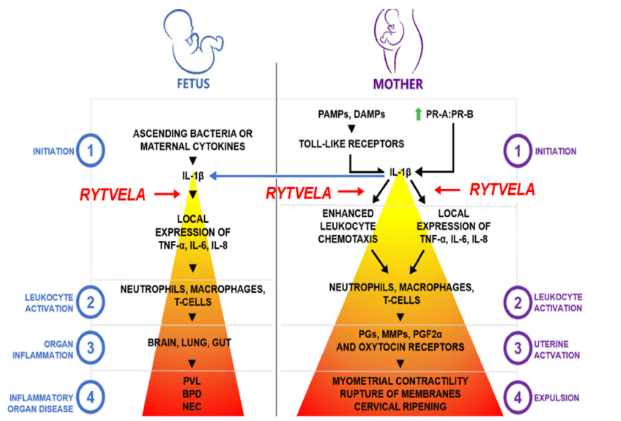PROM and PPROM > Maternal & Newborn
Exam Review
Nursing interventions and Management
Total Questions : 6
Showing 6 questions, Sign in for moreA nurse is preparing a client for an emergency cesarean birth due to umbilical cord prolapse.
Which of the following interventions should the nurse include in the preoperative care? (Select all that apply.).
Explanation
The correct answer is choice A, B and C. These interventions are part of the preoperative care for a client who is undergoing an emergency cesarean birth due to umbilical cord prolapse.Umbilical cord prolapse is a medical emergency that occurs when the umbilical cord slips through the cervix and into the vagina before the baby, causing fetal hypoxia.
Choice D is wrong because performing a leopold maneuver to determine fetal position is not necessary in this situation, as the fetal presentation is already known and the priority is to deliver the baby as soon as possible.
Choice E is wrong because applying an external fetal monitor to assess fetal heart rate is not sufficient in this situation, as the cord compression may cause severe bradycardia or variable decelerations.The nurse should manually lift the presenting part and hold it off the prolapsed cord while preparing for cesarean delivery.
A nurse is caring for a client with PPROM at 32 weeks of gestation.
The client asks the nurse why she needs to take corticosteroids.
The nurse’s best response is:
Explanation
corticosteroids can stimulate the production of surfactant, a substance that prevents the collapse of the alveoli in the lungs, and reduce the risk of respiratory distress syndrome, intraventricular hemorrhage, and neonatal death.
A nurse is performing a sterile speculum examination on a client with suspected PROM at 36 weeks of gestation.
The nurse observes a pool of clear fluid in the vagina.
What is the most appropriate action for the nurse to take next?
Explanation
A nitrazine test is a conventional test that uses pH testing of leaked amniotic fluid.Amniotic fluid is alkaline and turns the nitrazine paper blue, while vaginal secretions are acidic and turn the paper yellow or green.
A nurse is monitoring a client with PROM at 34 weeks of gestation who is receiving tocolytic therapy.
Which of the following findings would indicate a potential adverse effect of the medication?
Explanation
indicates a potential adverse effect of the medication.This could be a sign of infection or inflammation, which are common complications of preterm premature rupture of membranes (PPROM) and can lead to early delivery and neonatal morbidity.Tocolytic therapy aims to prolong the latency period and reduce the risks of prematurity, but it might also prolong fetal exposure to infection.
Normal ranges for maternal vital signs in pregnancy are:
• Heart rate: 60 to 100 beats per minute
• Blood pressure: less than 140/90 mmHg
• Temperature: 36.1°C to 37.2°C (97°F to 99°F)
• Respiratory rate: 16 to 20 breaths per minute

A nurse is educating a client with PPROM at 30 weeks of gestation who is being discharged home on bed rest with bathroom privileges.
Which of the following instructions should the nurse include in the teaching plan? (Select all that apply.).
Explanation
These are the instructions that the nurse should include in the teaching plan for a client with PPROM at 30 weeks of gestation who is being discharged home on bed rest with bathroom privileges.
A nurse is reviewing the laboratory results of a client with PROM at 38 weeks of gestation.
The nurse notes that the client has a positive culture for group B streptococcus.
What is the most likely implication of this finding for the client and the fetus?
Explanation
The client will need to receive intravenous antibiotics during labor and delivery to prevent neonatal sepsis.Group B streptococcus (GBS) is a type of bacteria that can be passed from a pregnant person to their baby during vaginal delivery and can cause serious infections in newborns.Antibiotics can significantly reduce the risk of the baby getting ill.
Sign Up or Login to view all the 6 Questions on this Exam
Join over 100,000+ nursing students using Nursingprepexams’s science-backend flashcards, practice tests and expert solutions to improve their grades and reach their goals.
Sign Up Now

